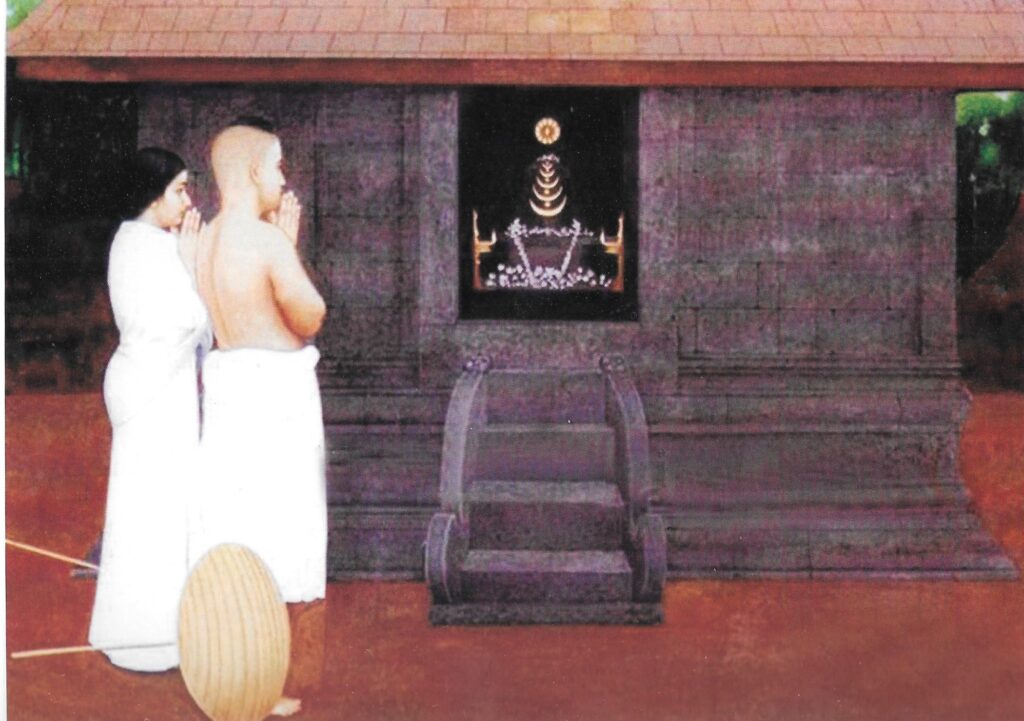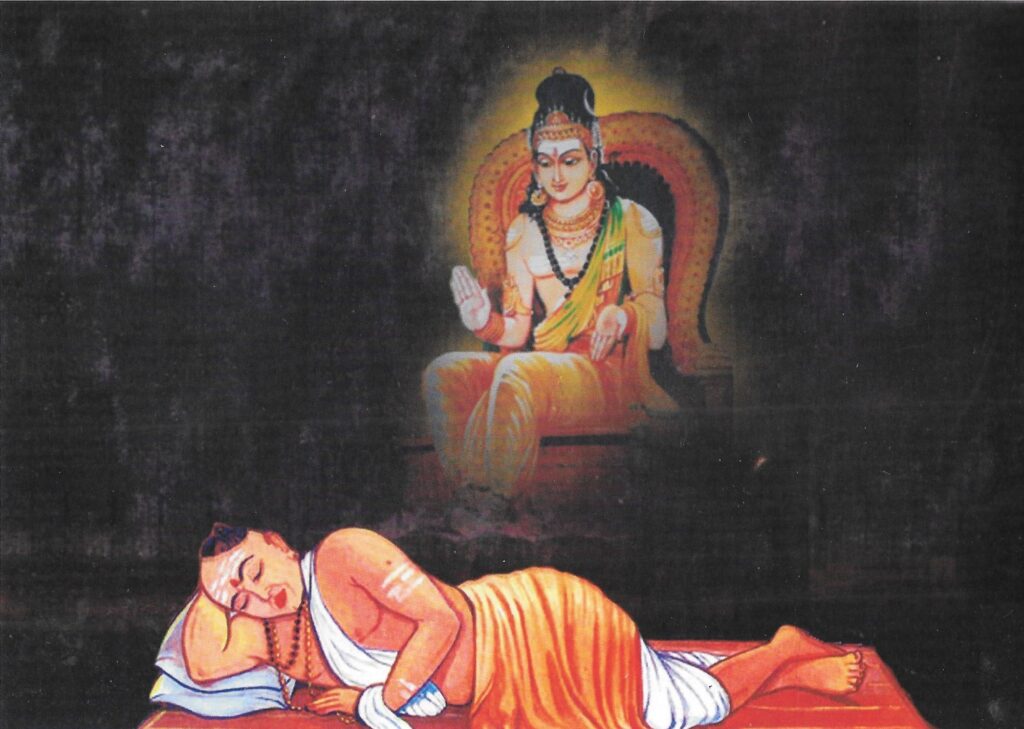Kalady was a prosperous village of Brahmins on the banks of river Poorna (referred as Periyara now) in Kerela. In the village lived a pious Brahmin by the name of Vidyadhiraja of the Kaipalli Illom. His son, Sivaguru, studied for several years in the Gurukula and became a Vedic scholar. Hearing about Sivaguru’s noble character and proficiency in the Sastras, several marriage proposals came. Vidyadhiraja decided on the match for his son in Aryamba, daughter of Magha Pandita of the Nambudiri Illom.
Aryamba grew up in a serene and pious ambience of Melpazhur Mana in a typical Kerela home in the village of Veliyanad which is situated about 30km southeast of Ernakulam. The environment of the household was religious and spiritual. The Mana had shrines of various deities including Kirata Siva, the family deity. Even today, this area gives you a flavor of what the environment would have been for Sankara in his growing up years.

Sivaguru and Aryamba were a devout couple who had a blessed life except that they didn’t have an offspring for years. With a heavy heart one day Sivaguru discussed with his wife that over half his adult life was over and that he felt sad that he may die childless. He could not see a way to fulfill the commitments to his ancestors. Aryamba had unwavering faith in the Divine and proposed that they perform various austerities and pilgrimages to Vrsabhacala, Siva temple in Trichur, which both did with utmost sincerity. Pleased with them, Siva appeared to Sivaguru in a dream offering a difficult choice of either a virtuous & brilliant son with a short life or one with a long life but without any greatness or virtues. He opted for the first and conveyed the boon of Siva to Aryamba. Both went home happy and continued to worship Lord Siva, served the learned and needy. Soon Aryamba gave birth to a beautiful son on a Sunday, the Sukla Pancami day in the month of Vaisakha. It is said that the lagna was fully aspected by the benign planets like Guru and Mars, Sun & Saturn were exalted. Traditionally, ladies went to their mother’s home for their first delivery and hence it is believed that Sankara was born in his maternal home.

Though the topic of Sankara’s place of birth doesn’t detract us from the Subject but the year of birth does create some discussion among the historians and biographers. The Government of India celebrated the 1200th birth anniversary of Adi Sankara in 1988 suggesting 788 A.D. as the year of birth. However, in a National Seminar held in 2003 in Mumbai on the Age of Sankara it was unanimously established by all the Matha pontiffs except Sringeri that 3rd April, 509 BC as the birth date of Sankara. Sringeri Matha pontiff accepts 788 A.D. as the year of birth. Each of the dates has their respective evidences but the deviation in the time scale is too large. For the sake of documentation, we accept 788 A.D. as given by modern scholars.
Delighted with the birth of his son, Sivaguru performed various religious rites for the newborn to invoke the blessing of the Lord. Divine signs were visible on the body of the child. He looked like Siva himself walking in a human body. The parents named the child Sankara in gratitude to the Lord. The name also means bestower (kara) of happiness (sam), sam karoti iti Sankara.